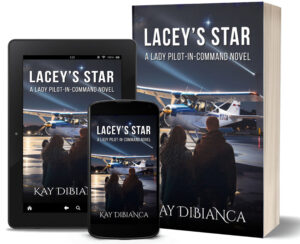
“Once you learn to read, you will be forever free.”
— Frederick Douglass
* * *
A week or so ago, Reavis Wortham wrote a TKZ post entitled “Reader Under Construction” where he outlined the benefits of reading to young children. The comments revealed how many of us remember our first experiences with reading and the joy of reading to others.
The photos of Reavis’s grandchildren made me think how fortunate children are who have parents and grandparents who read to them and encourage them to read for themselves. Not everyone is so lucky.
* * *
THE GOOD NEWS
“The more that you read, the more things you will know. The more you learn, the more places you’ll go.” – Dr. Seuss
Those of us who frequent the pages of the Kill Zone Blog are well aware of the profound benefits of reading. We remember the excitement that came with learning to read and the many hours of our youth spent with characters like Nancy Drew and the Hardy Boys.
Some of us were drawn to writing from the books we read. I’m going to guess that *none* of us can imagine our lives without being able to read.
But reading is more than enjoying a good story or educating oneself. It actually transforms the brain and makes the reader smarter, healthier, better organized, and more likely to make wise decisions in life.
MORE GOOD NEWS
“Reading is to the mind what exercise is to the body.” – Richard Steele
According to an article at the Mather Hospital website:
Regular reading improves your brain power and memory function by giving your brain a workout . It may help to slow the process of natural memory and brain function decline that comes with age. According to neuroscientists at Emory University in Atlanta, “reading a gripping novel makes changes in the way the brain connects with different circuits.”
* * *
NOW FOR THE BAD NEWS
After reading Reavis’s post, I was inspired to look up the data on literacy in America. Here’s what I found.
Although the U.S. spends an average of a whopping $17,280 per pupil annually to fund K-12 public education, the National Literacy Institute reports 21% of adults in the US are illiterate in 2024.
To expand on what this means, a Wikipedia page on Illiteracy in America states
Adults in this range have difficulty using or understanding print materials. Those on the higher end of this category can perform simple tasks based on the information they read, but adults below Level 1 may only understand very basic vocabulary or be functionally illiterate.
In addition to the large numbers of illiterate Americans, the National Literacy Institute also reports 54% of adults have a literacy below a 6th-grade level.
Furthermore, thewearyeducator.com site reports on the impacts of illiteracy:
- 43% of adults at Level 1 literacy skills live in poverty
- 85% of juveniles who interact with the juvenile court system are functionally illiterate
- More than 60% of all prison inmates are functionally illiterate
- Low literacy costs $73 million per year in direct health care costs
I could go on, but you get the message.
* * *
So, how can we as authors help combat the harmful effects of illiteracy? Writing good books that people want to read is one obvious answer. I like to think mystery novels not only entertain, but also challenge the reader to figure out who committed the crime, thereby improving the reader’s problem-solving skills. Stories that emphasize themes of justice and honesty are welcome messages in our often cynical world.
But can we do more?
* * *
“Books can be dangerous. The best ones should be labelled ‘This could change your life.'” —Helen Exley

So TKZers: What are your thoughts about the problem of illiteracy in our country? Any ideas on how we can help overcome it?

“Books and doors are the same thing. You open them, and you go through into another world.” —Jeanette Winterson
Fly with private pilot Cassie Deakin and enter a world of mystery.
Available at Amazon, Barnes & Noble, Kobo, Google Play, or Apple Books.

































 Villains are always useful in helping protagonists overcome their shortcomings and face down danger. An example of this was the film “Die Hard” where the protagonist John McClane (Bruce Willis) matches wits with the villainous deuteragonist Hans Gruber (Alan Rickman.)
Villains are always useful in helping protagonists overcome their shortcomings and face down danger. An example of this was the film “Die Hard” where the protagonist John McClane (Bruce Willis) matches wits with the villainous deuteragonist Hans Gruber (Alan Rickman.)
